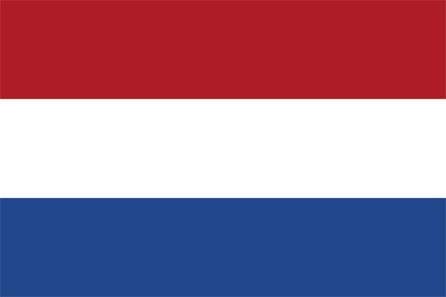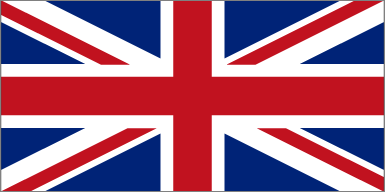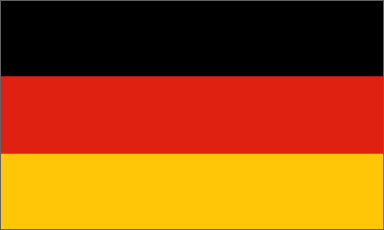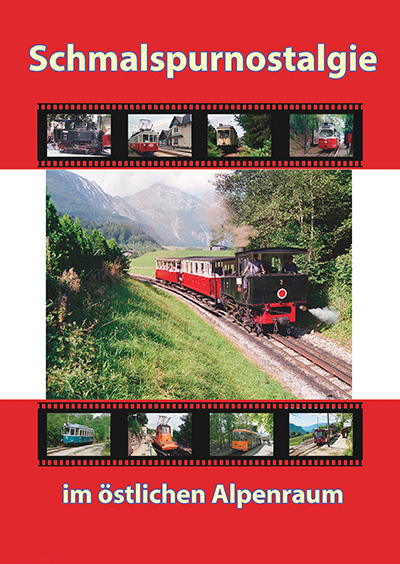



€ 19.95
excl. € 5.95 packaging and shipment cost
Because of the small edition, this DVD comes as a DVD-R, in a standard box, with label, booklet and envelope printed in professional quality.
DVD, PAL
colour, sound
Films can be separately chosen from a menu.
Optional subtitles:
German, English, Dutch
German commentary, optionally Dutch.
Alpine Railways. Think of those, and the first that spring to mind are the major lines that cross the Alps from north to south: Gotthard, L÷tschberg, Simplon, Brenner, Tauern. They mostly feature long tunnels to achieve high speeds and transport capacity. Huge efforts and associated costs have made these connections what they are today.
Right at the other end of the scale, we find the small railway or even tramway lines that maintain local services on a tight budget - often with adventurous routing: sometimes right between or on the mountains, sometimes more on the fringes. Six such mini-companies are presented on this DVD.
Nostalgia is guaranteed. Much may have changed in recent decades due to modernisation, but the first five films were shot in 1994, showing the various lines in a more original state. Only the footage of the Rittner Bahn is from 2011. Therefore, the "more modern" rolling stock from the 70s can be seen here - but also the old carriages with wooden superstructures could still be admired in daily operation.
Elderly film often doesn't look very convincing on DVD, because it takes a lot of money or effort to achieve the quality it deserves. Commercial companies often do not have the opportunity to invest in this. The market and the print runs are small and financially of little interest. Fortunately, none of this applies to an amateur, for whom the investment in time and effort is no obstacle: after all, it is a hobby. This DVD, based on the already existing footage, is the result of some 1,300 hours of work, which was worth it in my view.
I hope you, dear viewer, can agree with that!
|
|
Achensee Railway (AB)
[As of 1994] Three different track gauges meet in Jenbach. On both the north and south sides of the station, a small local railway connects to the standard gauge main line, each with its own unique gauge. Steam trains still run regularly to Mayrhofen on the 760 mm narrow gauge Zillertalbahn, and the meter gauge Achenseebahn on the north side of the yard takes its passengers to a large lake high up in the mountains. The line is partly designed as a rack railway. Three of the four locomotives the company started with in 1889 are still in service. They were all one hundred and five years old during filming. The steam trains produce an hellish racket, because the gradient of 1:6 demands the utmost from the toiling locomotives. The highest point of the line is located in Eben. From Eben to the terminus, the line slopes downwards at a 1:40 gradient. The last part is another three kilometers long, bringing the total route length to 6.5 kilometers. After 45 minutes of travel time, the train arrives at the Seespitz terminus, at the extreme tip of the Achensee.
Recorded in: 1994
Super-8, Colour, Sound (live and commentary)Running time: 24'05"
|
|

AB
|
|
|
|
Stern & Hafferl: V÷cklamarkt-Attersee (VA)
[As of 1994] The small town of V÷cklamarkt is located on the railway line from Linz to Salzburg. Here, the Stern & Hafferl company has one of its many small railway operations. There are many activities to lure the people into the trains. From historical equipment to environmental subscription, from a children's train to dining cars, and from walking routes to train driver courses - everything is possible. Over the years, a wonderful mishmash of equipment has been moving about on the Atterseebahn. There have been used trains from Bratislava, DŘsseldorf, Bern and various places from Austria itself. The most recent equipment consists of two motor vehicles that came from the Swiss AOMC.
Recorded in: 1994
Super-8, Colour, Sound (live and commentary)Running time: 9'19"
|
|

St&H: VA
|
|
|
|
P÷stlingberg Tramway (PB)
[As of 1994] The starting point of one of Austria's smallest railways is found close to Linz Urfahr station on the MŘhlkreisbahn. It is a line that is served by trams and it is just under three kilometers long. The P÷stlingbergbahn bears the name mountain railway with good reason, because at such a short distance more than 250 meters in height is gained. The steepest slope is almost 1:9. The ride time to the top is about 16 minutes. The maximum speed then is 12 kilometers per hour. On the way down, the trams are allowed to travel at 13.5 kilometers per hour. About a million people travel on the P÷stlingbergbahn every year. The record year was 1943, when 1.3 million were counted. In recent years, the increasing building activity at the foot of the mountain has ensured that commuter traffic is also slowly becoming serious.
Recorded in: 1994
Super-8, Colour, Sound (live and commentary)Running time: 12'35"
|
|

PB
|
|
|
|
Stern & Hafferl: Gmunden Tramway (SG)
[As of 1994] If we are to believe the advertising, Gmunden has the smallest tramway in the world. The tram line is slightly over two kilometers long, and world famous for its steep gradient of no less than 1:10. In 1975 the tram was shortened by a few hundred meters. The remaining part was too difficult with the traffic control at an intersection. Since then, there has been a continuous squabble between those who wanted to get rid of the tram altogether, and those in favor of the terminus at Rathausplatz. Meanwhile, the tram lobby is making a case for extension to Gmunden's second station, which would make the line much busier. The outcome can only be guessed at.
Recorded in: 1994
Super-8, Colour, Sound (live and commentary)Running time: 6'04"
|
|

St&H: SG
|
|
|
|
Trieste-Opicina Tramway (TTO)
[As of 1994] The town of Villa Opicina is located in the mountains behind the Italian port city of Trieste. Its tram is unique in the world because it contains a cable section. An orange push carriage takes the tram up an over 1:4 slope. The push car itself is attached to the cable, which is pulled from the upper station. It is only about a distance of 800 meters, but it is a climb of more than 160 meters. Tram and oncoming traffic are each other's counterweight. The top part of the line, where the tram is simply a tram again, has a lot to offer in terms of landscape. The tram line is in total more than five kilometers long, almost exactly half of which lies on the territory of Trieste.
Recorded in: 1994
Super-8, Colour, Sound (live and commentary)Running time: 17'51"
|
|

TTO
|
|
|
|
Rittner Tramway (RB)
[As of 2011] The sunny plateau of the Ritten is a popular destination for tourists. The old rack railway from Bozen to Maria Himmelfahrt no longer exists. A second-generation cable car system has now taken its place. Against all logic, the rail connection high up still exists. The most modern trains date from the 1970s, and came second-hand from the (Swiss) Trogener Bahn. The other trains (or rather: trams, because it is a tram company) are older - to much older.
Recorded in: 2011
HD-Video, Colour, Sound (live and commentary)Running time: 25'33"
|
|

SAD: RB
|
|
